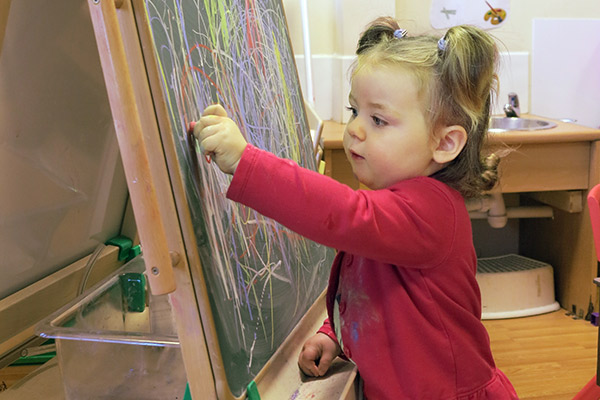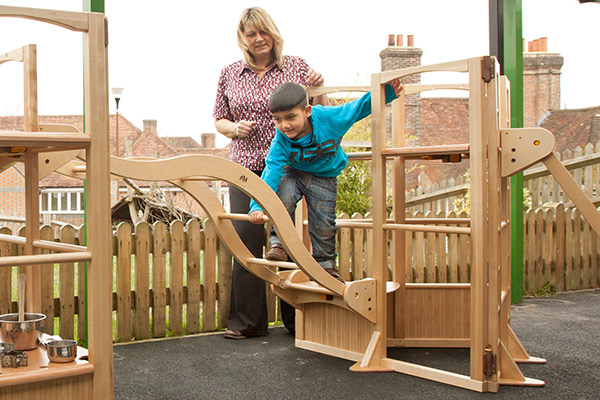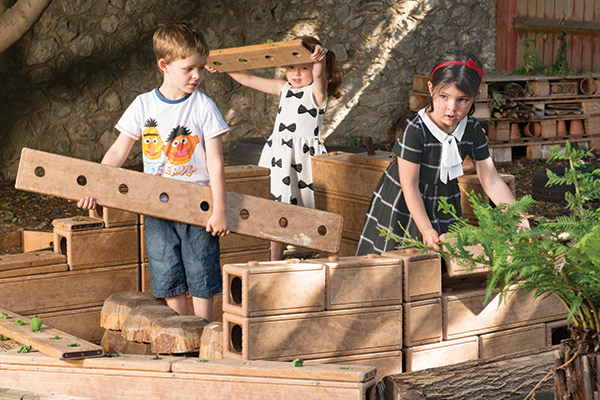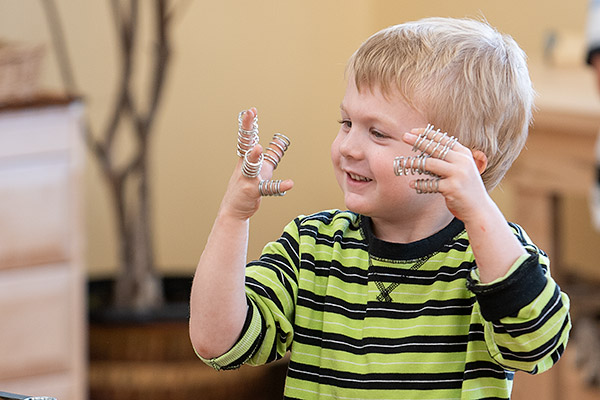Crossing the midline
An indicator of physically balanced children
| March 2022It is a sad indictment of our modern and supposedly enlightened times that children are becoming more sedentary than ever before. It is now believed that the average five-year-old cannot do what three-year-olds were doing then to twelve years ago. There are many reasons for this: a preponderance of push-chair kids, lack of challenging play space, overt health and safety officialdom curtailing any semblance of risk taking, and a dominance of the computer screen and video games. Children are less well physically rounded than before and the numbers of obese and overweight children seems to be rising each year.
Why sitting still is hard for children
We need to get children moving and a well organised balance system indicates a well organised brain. Balance is trained through movement. Those children who are unable to stay still are showing that their balance and motor systems are not yet sufficiently mature to remain still for long periods of time. They need to move to get their brains into gear.
The rule of thumb for how many minutes children can sit still for is the age plus two – I would suggest that for boys this is even shorter. Sitting still is the most advanced stage of physical development as you then have complete control over your body. You need to seriously ask yourself, how long do I expect children to be sitting still, and more importantly, why?
Children need to be physically comfortable in order to cognitively and emotionally engage with an experience. Making children sit still for prolonged periods of time can soon turn even the most eager learner into a disaffected young soul. Two years ago I carried out research with six-year-old children about their favourite and least favourite parts of the school day in Year One. The findings were astonishing, and for boys in particular the least favourite time was ‘story time’, a part of the day that should be relaxing and fun. They did not like it because it involved prolonged periods of sitting down in uncomfortable positions listening to an adult. Is there any learning going on here?
You have to ask yourself what is the purpose of such routines, are they about learning and listening or are they about control? I have witnessed too many group and story times where the learning intention is lost because the adult is adamant that all children are sitting quietly with hands on laps and legs crossed. Boys in particular find this excruciating and such positions can cause physical discomfort. So there is no way on Earth any deep level enjoyment or learning will take place.
Jimmy’s story
It's carpet time. I don't like carpet time and we have to sit for ages. My legs hurt and I can't cross them all the way, but the grown up says I have to. Sometimes I have to move and the grown up tells me off because I can't sit still. We have to come to the carpet after lunch and have a story. I would like to lie down. Robert always gets told off for moving around, and so we sit for an even longer time.
Does it matter if the children are lying down at story time or standing up at a jaunty angle eating a banana? No, it does not. Children need to be comfortable. So please let it happen and relinquish some adult power here, because the focus has to be on children’s involvement in the learning process. Otherwise the learning intention of any carpet session will be lost and the focus will be on waiting for children to be still and quiet. Invariably, it'll always be the same children whom you are waiting for, so the learning is lost, the attention is lost and carpet time is equated to an unpleasant experience in the limbic brain.
Crossing the midline
In order for children to become physically balanced individuals they need to cross the “midline” or “centre line”, the line that runs down the middle of their bodies. Observations of children painting will tell you if this is happening, happened, or yet to happen. You might well note that children in your setting, when painting, will hold the brush in the left hand and paint to the middle of the paper; they then move the brush to the right hand and continue. The reason for this is very simple, they cannot yet make a line that carries them from one side of the paper to the other, and they have not crossed that middle line. The synapses in the brain have not yet connected.
A very useful exercise to assist children in crossing this middle line is the “lazy 8”. A lazy 8 I hear you cry, what on earth is a lazy 8? Well it is exactly what it says it is, an 8 on its side.
This is a great little activity to assist children in getting across the middle line and can be carried out anywhere in your setting – on the finger-painting table, on the floor or on the wall. I used to have lazy 8 shapes all over my classrooms when I was teaching. On the wall I would have a large piece of paper, two foot prints at the centre of the 8 and some thick markers so the children could trace the shape. They would start in the middle and go up to the right, always keeping the pen on the paper or the finger in the paint so it was a single continuous movement. It is an incredibly therapeutic and relaxing activity and children would spend ages going over the 8 – constantly crossing that middle line.
You can also do this with children by standing in front of them and saying “Follow my finger with your eyes and don’t move your head”. You would then start at the nose and draw a lazy 8 in the air to gauge whether children can follow the finger across both sides of the body. Some will be able to do this, others will have to refocus when you come back to the middle and will invariably start to follow your finger with their head, not their eyes. Children will not be able to read or write until they have crossed this middle line.
So if they cannot – get them outside and climbing and balancing. Through your observations and knowledge of the children in your school/setting you may have picked up on what I term the “bumbly” children. These children are almost always boys. You can spot them a mile away. They:
- Cannot walk across the setting without touching surfaces on the way – they do this in order to anchor themselves in the space. To put it bluntly they do not know where they are, they do not know the extremities of their bodies or where they are in space.
- Sit on children at group times or knock them out of the way at the sand and water trays – they literally cannot see them and calculate how their own body mass will fit into the space provided.
These boys require our help and urgently. Children are not dismissive by nature but you will find that these bumbly boys will become socially ostracised by their peers who do not want to be sat on or squashed so they move away. The affect this has on emotional well-being and self-image is devastating. They become the outsiders of the group, the solitary children, later to be found in the primary playground sitting on the “friendship bench”. And to think that for many boys this is a daily occurrence in their formative pre-school and school years.
So when you are looking at provision and interactions, put yourself in the shoes of those young boys in your setting and ask:
- Do I have a positive self-image? No
- Do I have a close group of friends? No
- Do I enjoy myself and join in? No
- Do I feel lonely and awkward? Yes
- Do I like coming here? No
Bearing in mind that boys physically develop later than girls, it is imperative that we get them moving so that any developmental gap may be bridged, so that we have boys with a positive self-image, and a can-do feeling about themselves as capable, creative and confident learners.
From Getting it right for boys by Neil Farmer, pages 38–42, published with permission of the author. Based on an earlier article (2017) from the same source.










